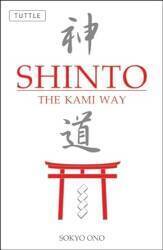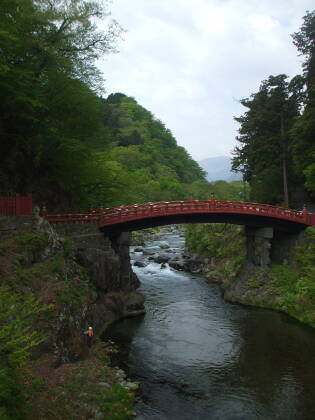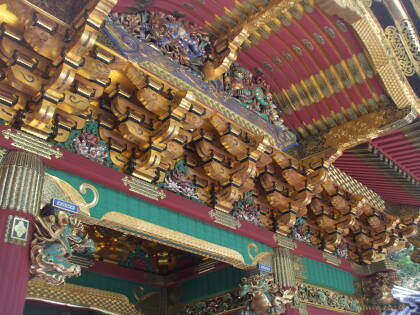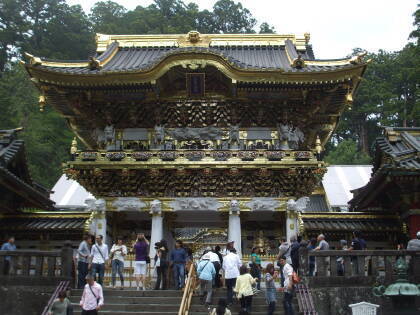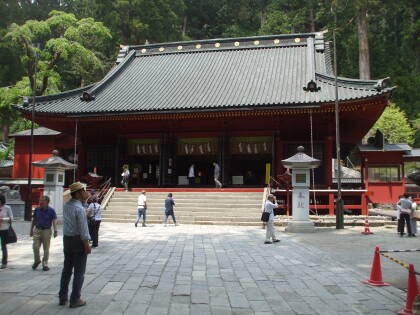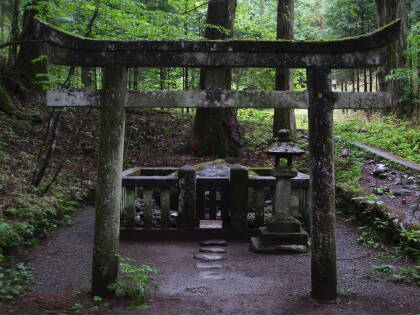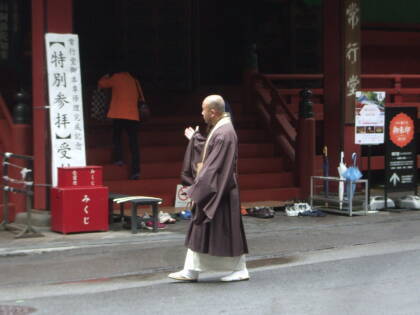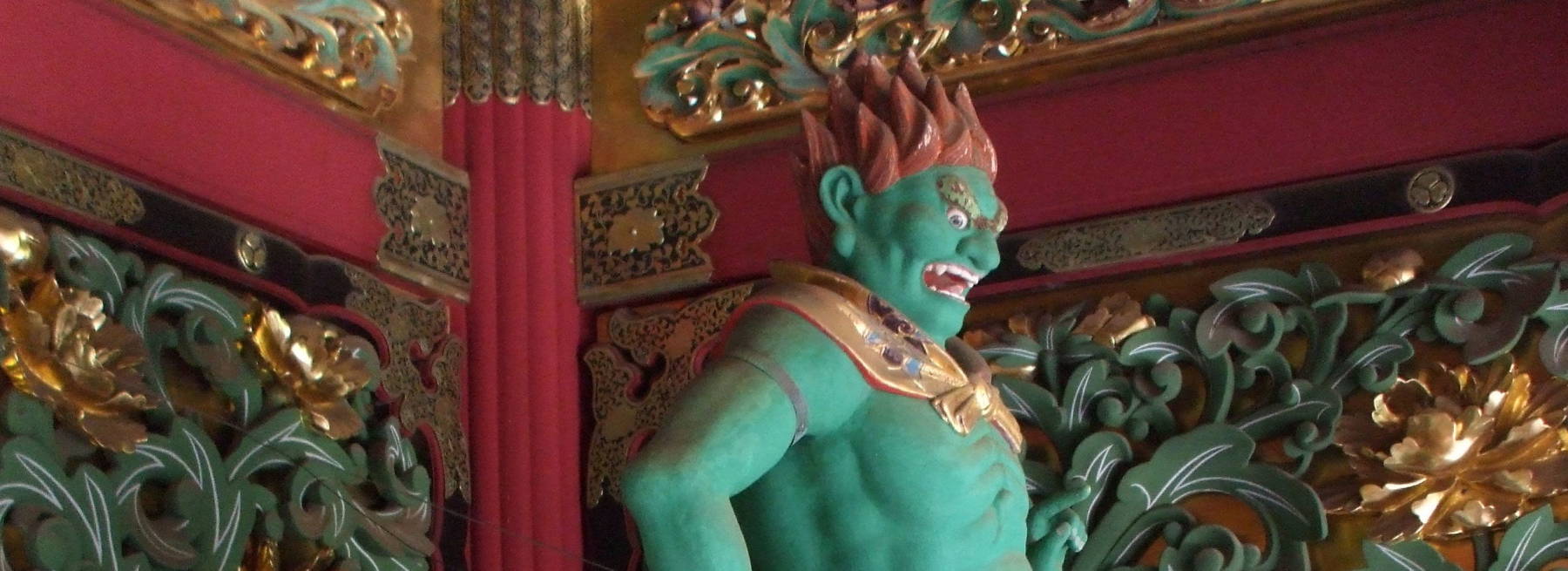
Iemitsu Taiyuin in Nikkō
The Mausoleum of Tokugawa Iemitsu
Tokugawa Iemitsu was the third Shōgun of the Tokugawa Shōgunate, the grandson of its founder, Tokugawa Ieyasu. After his death in 1651, he was entombed in an elaborate temple and shrine at Nikkō.
His tomb faces northeast, an extremely inauspicious direction. Normally no one would built a building like that. But it means that his tomb faces that of his grandfather, an alignment worth making the trade-off.
He was given the posthumous name Taiyūin or Taiyu-in, and so his tomb is Taiyūin Temple, also known as Nikkōsanrinnōji Taiyūin. That is, the Taiyūin temple that is part of the overall Rinnō-ji temple complex at Nikkō.
Let's buy a ticket and make our way through the outer gate.
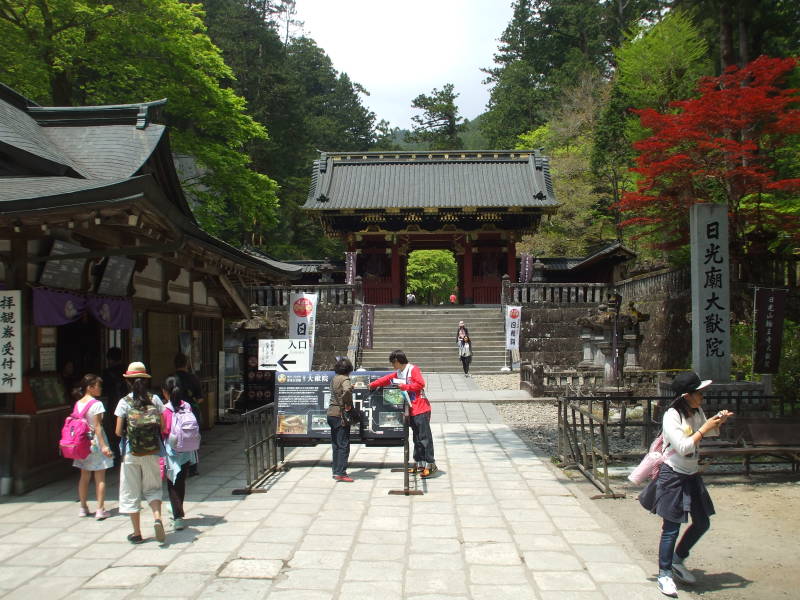
The outer gate has a pair of guardians. More on that in a moment...
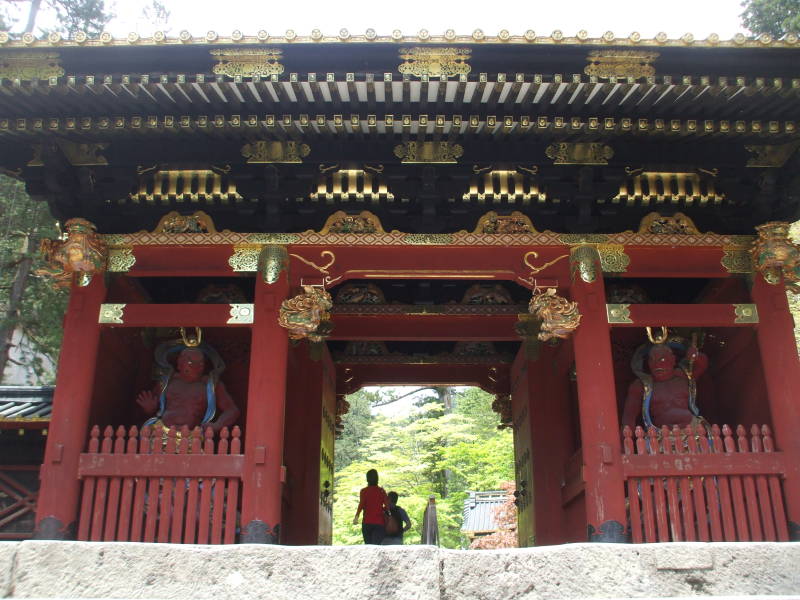
A spring in the hillside carries water to the ablutions fountain.

Shintō refers to the purification rite as temizu, the water-filled reservoir as mizuya or chōzubachi, and the small shelter or pavilion as the chōzuya or temizuya.
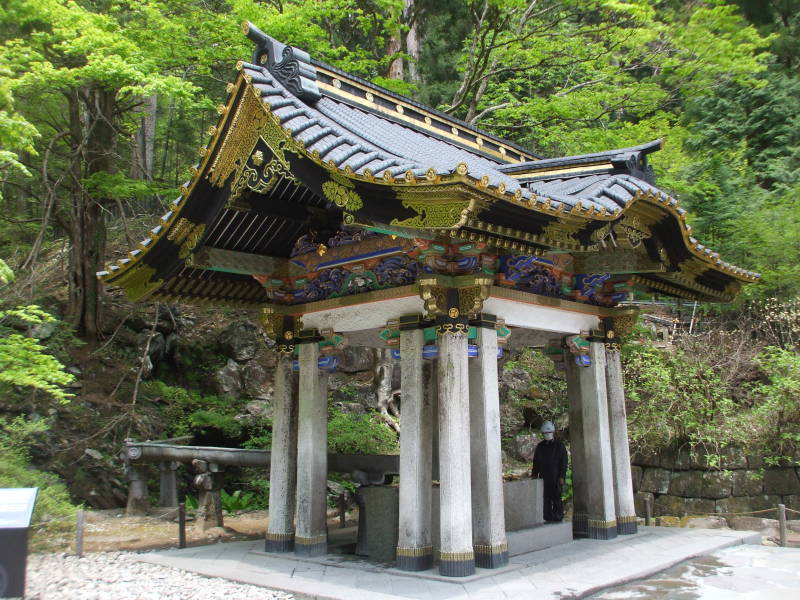
When Iemitsu inherited the office of Shōgun, he replaced his father's advisors with his childhood friends. This was even though his father had abdicated and still ruled as Ōgosho or retired shōgun. His advisors helped Iemitsu to create a strong, centralized administration. This made him unpopular with many daimyō the powerful feudal lords.
Iemitsu simply removed his opponents. He worried that his younger brother Tadanaga would assassinate him. Once their father had died, Iemitsu forced Tadanaga to perform seppukku, ritual suicide.
He had a falling out with his homosexual lover, Sakabe Gozaemon, a friend from childhood and now a retainer. Iemitsu murdered Gozaemon as they shared a bathtub.
Not someone to mess with.
Iemitsu's temple is enclosed within a wall. Here's the elaborate gate leading us through the wall.
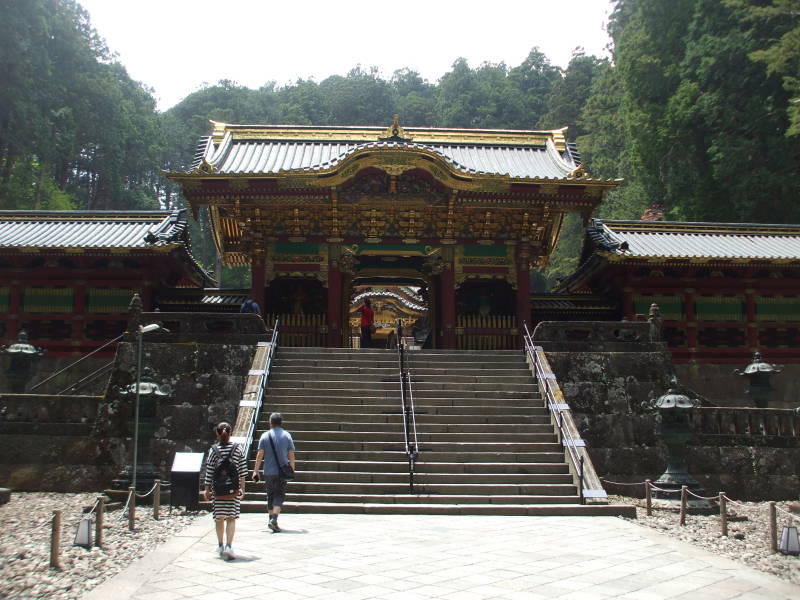
Eimitsu set up his sankin-kōtai system which forced the daimyōs to reside part of the time in Edo, the former fishing village that became the shōgunate's capital (and would eventually be renamed Tōkyō), and part of the time in their home provinces.
Moving back and forth like that limited how much wealth or power the daimyōs could amass. It also forced each one to regularly spend a sizable sum on the immense travel expenses for them and their large entourage between the home province and Edo.
Also, the daimyōs' wives and heirs had to remain in Edo, serving essentially hostages who coulud be harmed or killed if the daimyōs plotted rebellion against the shōgunate.
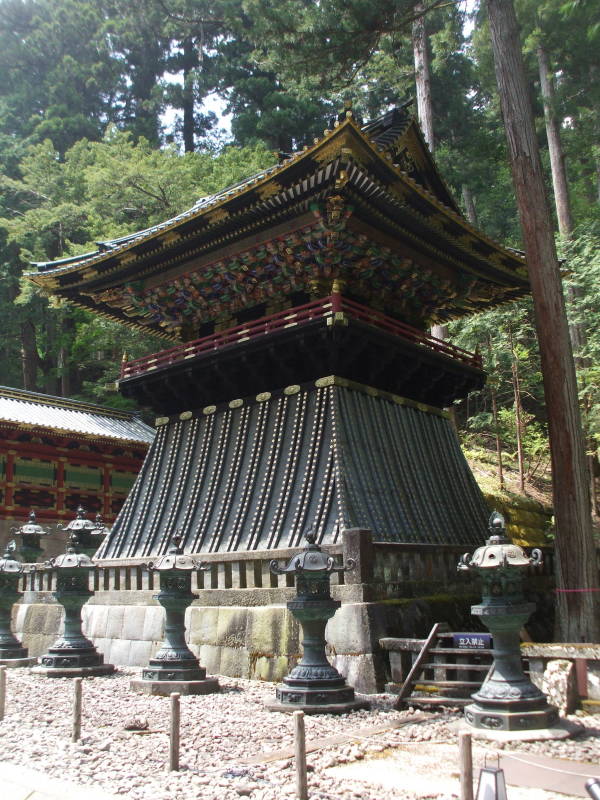
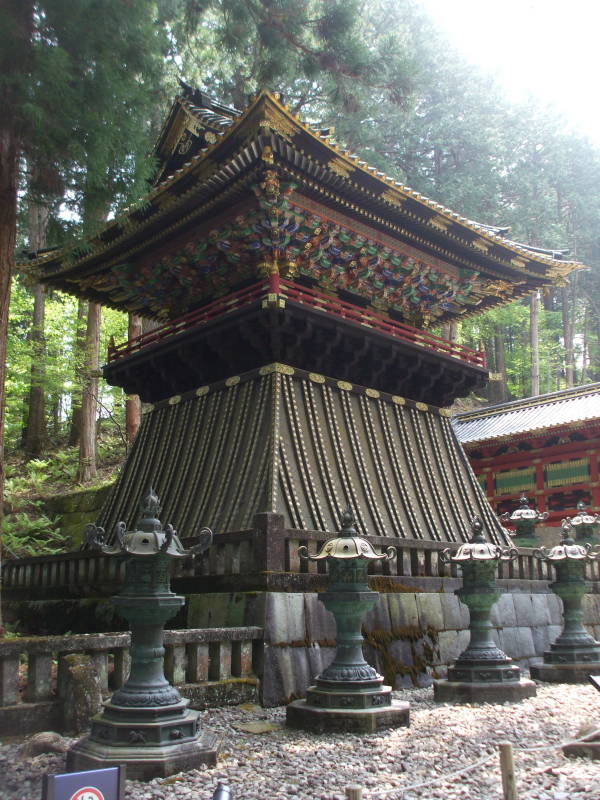
Ieyasu, the first Tokugawa shōgun, had established policies of deporting Europeans, prohibiting Christianity, and strictly limiting foreign relations and trade.
Iemitsu dialed all that up.
He paid rewards to anyone who could turn in covert Christians, who were then crucified.
He expelled most of of the remaining Europeans, except for a small and confined Dutch trading operation.
He imposed further restrictions on foreign contacts, essentially closing the country off from the outside world. All Japanese citizens were forbidden to leave the country or return, under a penalty of death.
An armed revolt arose in 1637 in Shimabara, on the large island of Kyūshū in the south. It was nominally against the anti-Christian policies, but overly high taxation and cruel treatment of peasants by the local lord were also factors.
The shōgunate's suppresson of the revolt killed thousands, and many more were executed afterwards. The fact that many rebels had been Christians was used as a convenient pretext for expelling all the remaining Portuguese, and further restricting the Dutch East India Company to an artificial island in Nagasaki harbor. European access to trade relations with Japan was restricted to one Dutch ship each year. Furthermore, every newly arrived ship was thoroughly examined for Catholic priests and followers. Meanwhile, Spain's conquest of the Philippines and territories in the New World continued to worry the leaders of Japan.
On we go, through the outer gate.
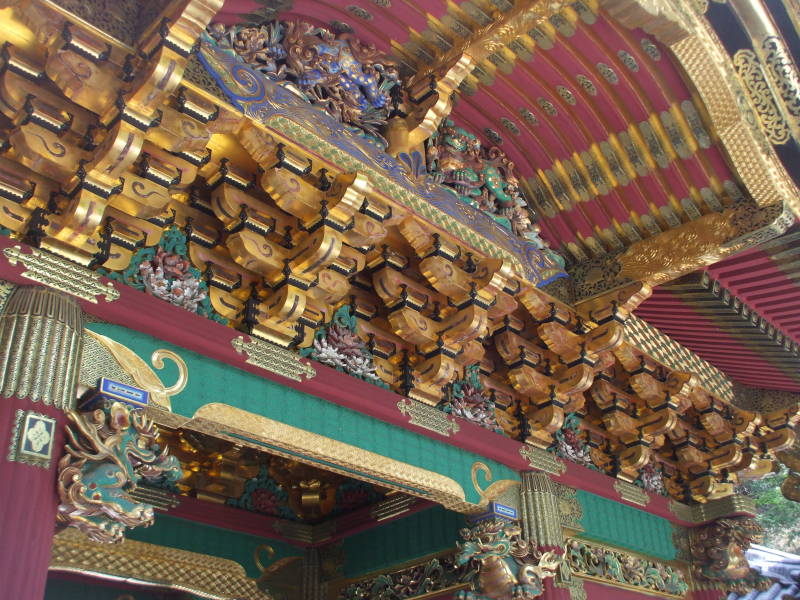
The gateway, as usual at a Buddhist temple, is flanked by Niō guardian figures. These are Hindu deities who have been incorporated into Buddhism as protectors against evil spirits. Their fierce appearance keeps demons and thieves out of the temple grounds. Agyō stands to one side as you enter, wielding a vajra or thunderbolt. Ungyō is on the other side, empty-handed or wielding a sword.
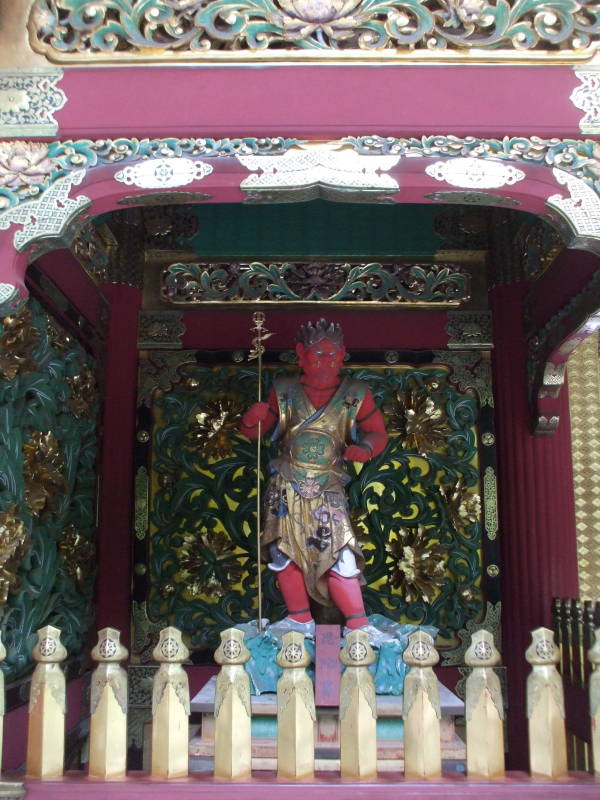
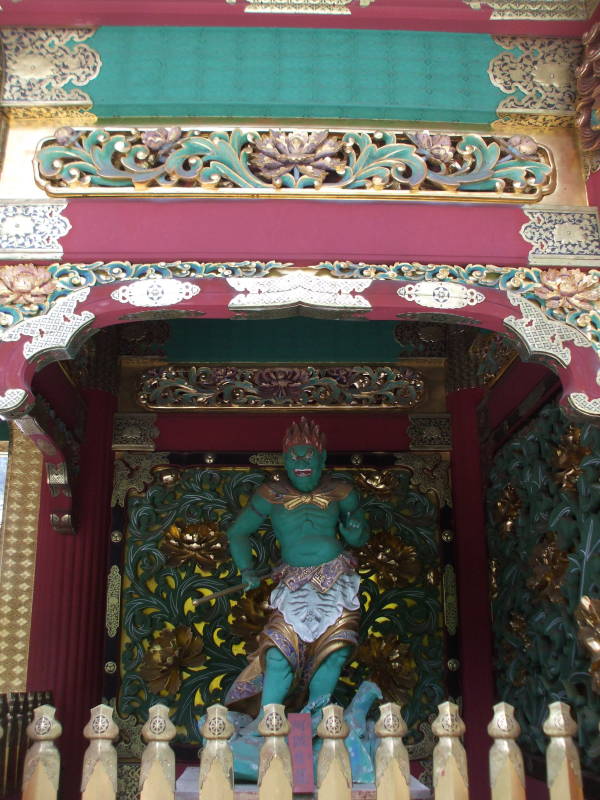
Their appearance is derived from the Greek hero Ηρακλής, or Herakles. Alexander the Great and his army transported Greek culture to the edge of the Indian subcontinent. From there it dispersed even further, traveling through Central Asia and China along the Silk Road, and then continuing to Japan along with Buddhism. Greco-Buddhist art used traditional imagery of Herakles to represent Vajrapāṇi, the protector of the Buddha.
One protector has an open mouth, pronouncing the sound of the Sanskrit letter अ or A, while the other protector has a closed mouth, pronouncing the sound of the Sanskrit latter म or MA. Together they pronounce the sacred syllable Aum or ॐ. Aum is the sacred sound of Hinduism, but it is used as a mantra in Buddhist, Jain, and Sikh practice.
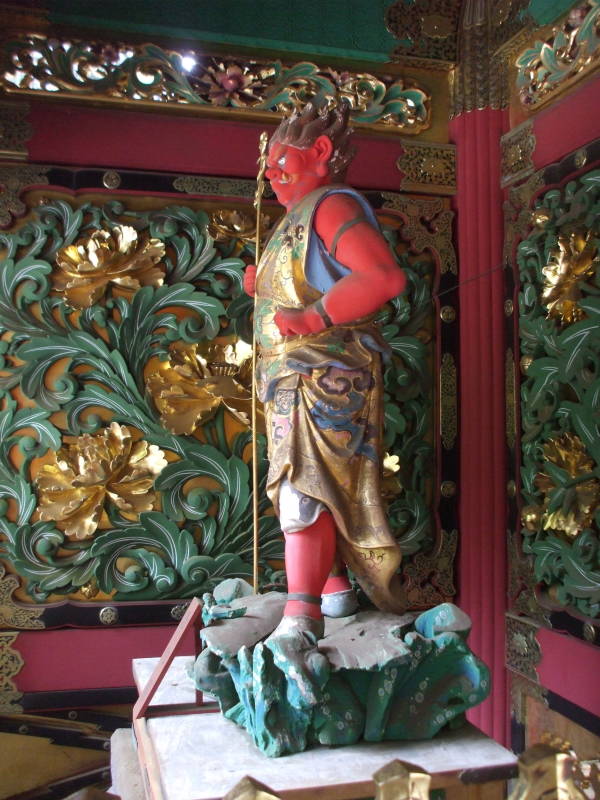
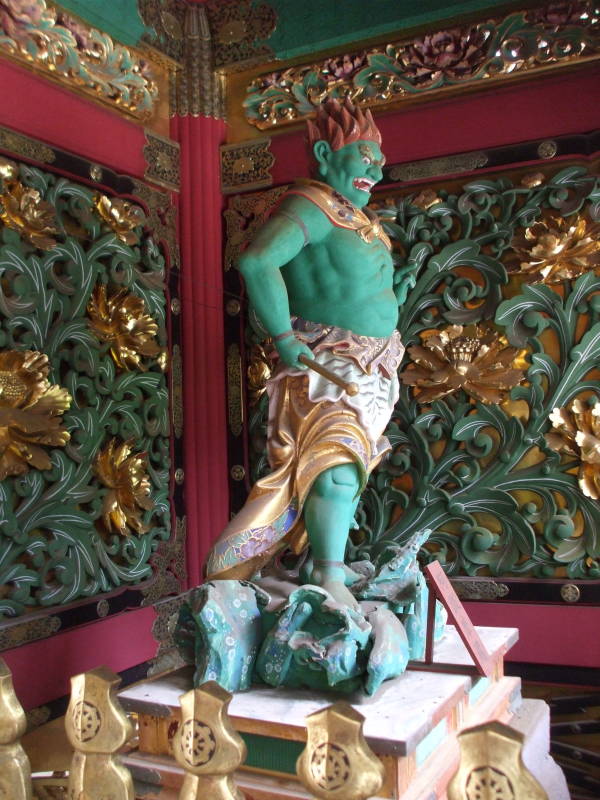
Once inside the walls, we can proceed into the temple.

Iemitsu died in 1651, at the age of 47. He was the first Tokugawa shōgun whose reign ended with death and not abdication.
He was given a posthumous name of Taiyūin, also known as Daiyūin. This temple complex was built, and he was buried here.
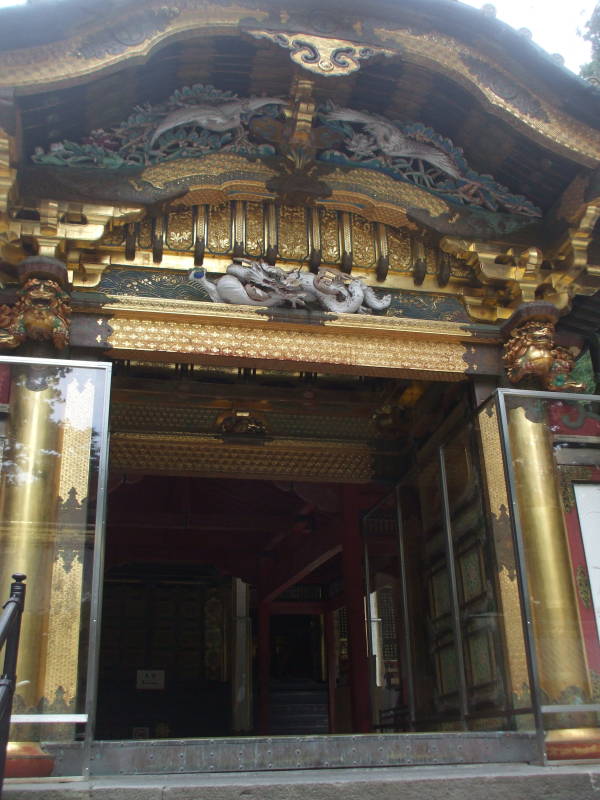
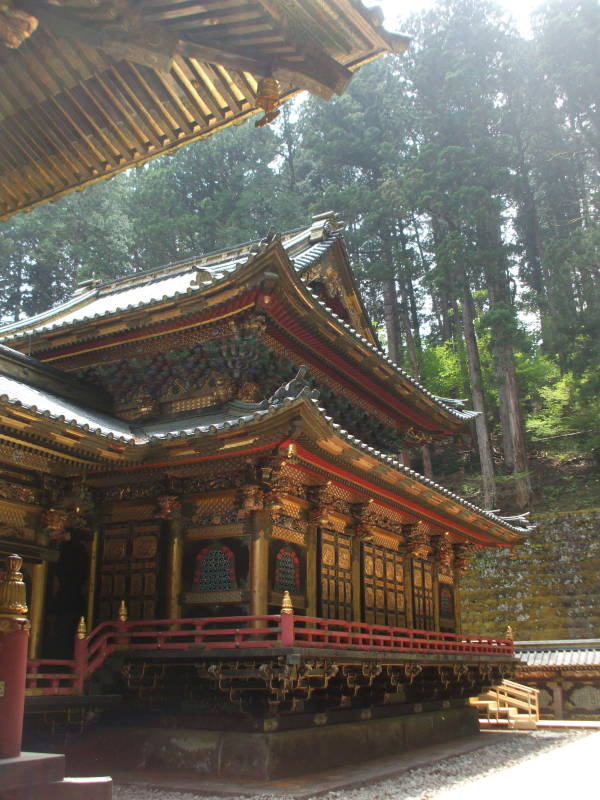
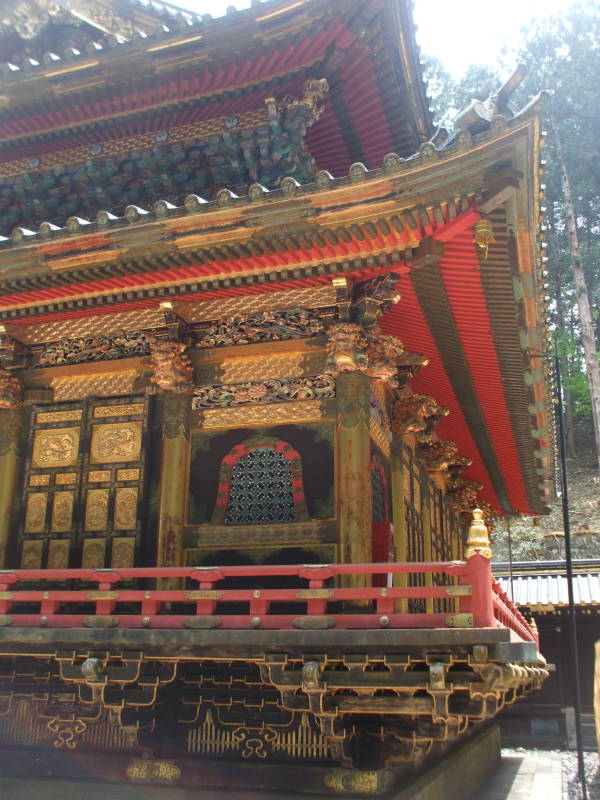
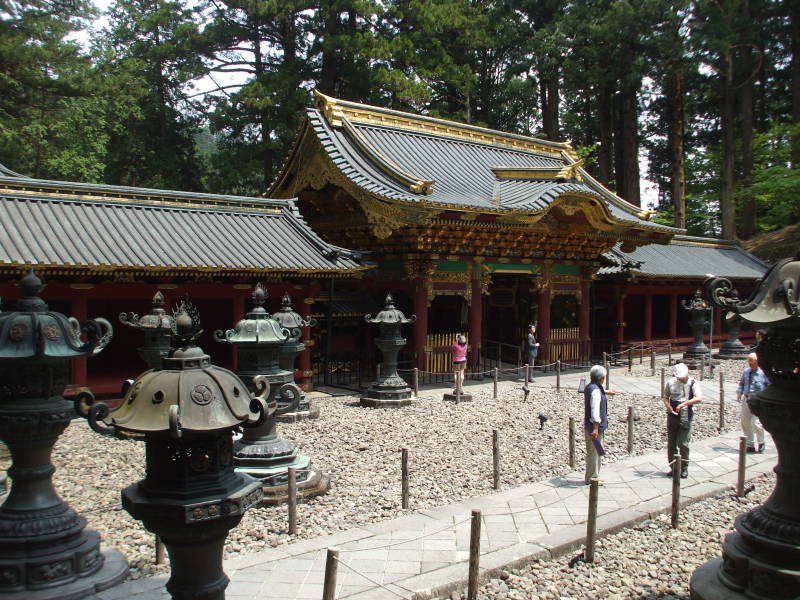

If you think this complex is elaborate, the next stop is the shrine of Tokugawa Ieyasu, his grandfather.
Choose your next stop around Nikkō:
Or, somewhere else around Japan:

